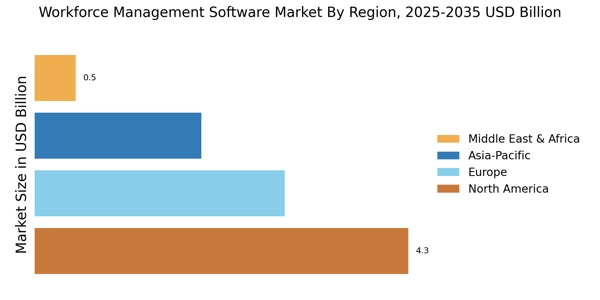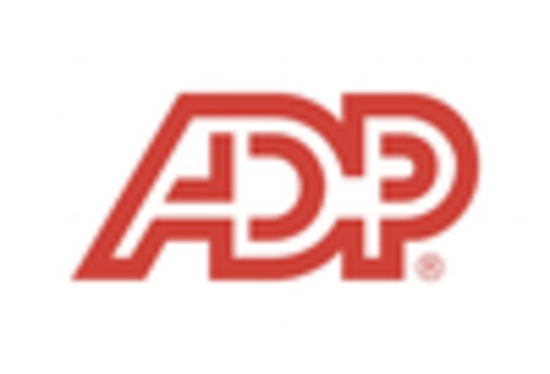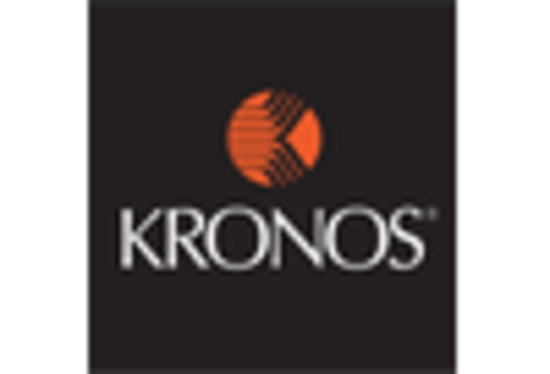Integration of Advanced Analytics
The Workforce Management Software Market is increasingly characterized by the integration of advanced analytics capabilities. Organizations are leveraging data analytics to gain insights into workforce performance, attendance patterns, and productivity metrics. This analytical approach enables businesses to make informed decisions regarding staffing and resource allocation. Recent studies indicate that companies utilizing analytics-driven workforce management solutions can improve employee productivity by as much as 20%. The ability to analyze data in real-time allows organizations to respond swiftly to changing demands and optimize their workforce strategies. As the importance of data-driven decision-making continues to rise, the integration of advanced analytics into workforce management software is likely to become a standard practice.
Shift Towards Remote Work Solutions
The Workforce Management Software Market is witnessing a notable shift towards solutions that support remote work. As organizations adapt to changing work environments, there is an increasing need for software that facilitates remote workforce management. This includes tools for scheduling, time tracking, and performance monitoring that can be accessed from various locations. Data suggests that companies utilizing remote workforce management solutions can enhance productivity by up to 25%. This trend is likely to continue as businesses recognize the benefits of flexible work arrangements. Consequently, the demand for innovative software that caters to remote teams is expected to grow, reflecting a broader transformation in workplace dynamics.
Regulatory Compliance and Labor Laws
The Workforce Management Software Market is significantly influenced by the increasing complexity of regulatory compliance and labor laws. Organizations are required to adhere to various labor regulations, which can vary widely across regions. The implementation of workforce management software aids in ensuring compliance with these regulations, thereby mitigating the risk of legal penalties. For instance, software solutions that track employee hours and automate payroll processes can help organizations avoid costly mistakes. As labor laws continue to evolve, the demand for software that can adapt to these changes is expected to rise. This trend indicates a growing recognition of the importance of compliance in maintaining operational integrity and protecting organizational reputation.
Focus on Employee Well-being and Retention
The Workforce Management Software Market is increasingly focusing on employee well-being and retention strategies. Organizations are recognizing that a satisfied workforce is crucial for long-term success. Software solutions that facilitate employee engagement, feedback, and performance tracking are becoming essential tools for HR departments. Data indicates that companies prioritizing employee well-being can reduce turnover rates by up to 15%. This trend reflects a broader understanding of the correlation between employee satisfaction and organizational performance. As businesses strive to create a positive work environment, the demand for workforce management software that supports these initiatives is expected to rise, highlighting the importance of human capital in achieving business objectives.
Increased Demand for Operational Efficiency
The Workforce Management Software Market is experiencing a surge in demand for solutions that enhance operational efficiency. Organizations are increasingly recognizing the need to streamline processes, reduce labor costs, and optimize resource allocation. According to recent data, companies that implement workforce management solutions can achieve up to a 30% reduction in operational costs. This trend is driven by the necessity for businesses to remain competitive in a rapidly evolving market. As organizations seek to maximize productivity, the adoption of sophisticated software tools that facilitate real-time monitoring and analytics is likely to grow. This focus on efficiency not only improves profitability but also enhances employee satisfaction, as optimized workflows lead to a more balanced work environment.


















Leave a Comment